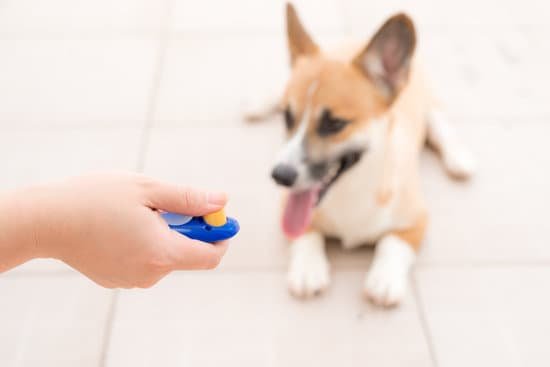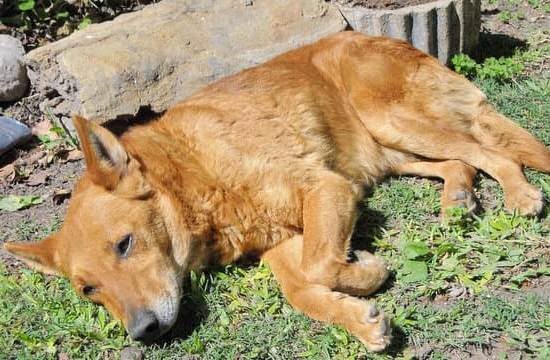Training a low energy dog can be a unique challenge compared to more energetic breeds. These dogs may not exhibit the same enthusiasm or desire to learn as their high-energy counterparts. However, with patience and understanding, it is possible to successfully train a low energy dog. This article will provide you with valuable insights and techniques for effectively training your low energy companion.
Before diving into training methods, it is important to understand the challenges associated with training a low energy dog. These dogs often have a naturally laid-back disposition and may lack motivation for physical activities or training exercises. This can make it difficult to keep them engaged during training sessions and can lead to frustration for both the owner and the dog.
Recognizing the signs of a low energy dog is crucial in tailoring your training approach. Low energy dogs typically exhibit behaviors such as lethargy, sleepiness, reluctance to engage in physical activities, and a general disinterest in learning new commands or tricks. Understanding these signs will help you establish realistic expectations for your training sessions while also considering your dog’s individual needs.
By setting realistic expectations for your low energy dog’s training, you can ensure that you are providing them with the appropriate level of stimulation without overwhelming them. This means accepting that progress might be slower compared to higher energy breeds and focusing on small achievements rather than expecting immediate results. Training should be seen as an ongoing process of building trust and strengthening the bond between you and your low-energy companion.
In the following sections of this article, we will explore various techniques and strategies that are specifically tailored to address the unique challenges faced when training a low-energy dog. From establishing consistent routines to incorporating mental stimulation activities, this comprehensive guide will provide you with expert advice on how best to motivate and engage your beloved low energy pup.
Recognizing the Signs of a Low Energy Dog
Training a low energy dog requires a different approach compared to training dogs with higher energy levels. Before diving into training techniques, it is important to first recognize the signs that indicate your dog has low energy. By understanding these signs, you can better cater your training methods to meet your dog’s unique needs.
Here are some common signs that may indicate you have a low energy dog:
- Lack of Interest in Exercise: Low energy dogs often show little enthusiasm towards physical activities such as going for walks, playing fetch, or running around in the backyard. They may prefer lying down and being inactive for most of the time.
- Slow Movement: These dogs tend to move at a slower pace than their more energetic counterparts. They may walk slowly on walks or take longer breaks during play sessions.
- Short Attention Span: Low energy dogs may struggle to focus and pay attention for extended periods of time. They may easily get bored or lose interest during training sessions.
- Sleeping Most of the Day: If your dog spends a significant portion of their day sleeping or resting, it could be an indication that they have low energy levels.
- Reluctance to Learn New Tricks: Low energy dogs may not show much enthusiasm when it comes to learning new commands or tricks. They might require additional motivation and patience during the training process.
When you observe one or more of these behaviors consistently in your dog, it is likely that they fall under the category of low energy dogs. Recognizing these signs will help you tailor your training approach accordingly and set realistic expectations for what can be achieved with your furry friend.
To effectively train a low energy dog, it is important to create a customized training plan that takes into account their individual needs and abilities. This will ensure that both you and your pup have a successful and enjoyable training experience together.
Setting Realistic Expectations for Training a Low Energy Dog
Training a low energy dog can present its own unique challenges, as these dogs may not have the natural drive or motivation to engage in energetic and active training sessions. However, with the right approach and realistic expectations, it is possible to successfully train a low energy dog.
One important aspect of setting realistic expectations for training a low energy dog is understanding the limitations and preferences of these dogs. Low energy dogs may not be as enthusiastic about physical exercise or energetic activities compared to their high-energy counterparts. It’s important to accept that some low energy dogs simply have different temperaments and activity levels.
When setting expectations for training a low energy dog, it is essential to recognize that progress may be slower compared to more high-energy breeds. Patience is key when working with a low energy dog, as they may require longer breaks during training sessions and more time to process information. It’s best to focus on small achievable goals and celebrate each milestone along the way.
To set realistic expectations for training a low energy dog, it can be helpful to break down the training into manageable steps. Creating an ordered list of skills or behaviors you would like your dog to learn can provide structure and direction for both you and your dog. Start with basic obedience commands such as “sit,” “stay,” and “come,” then gradually progress to more advanced exercises.
It’s important to remember that every individual dog is different, even within the category of low energy breeds. Take into consideration your own dog’s unique personality, preferences, and learning style when establishing expectations for their training journey. Some low-energy dogs may have specific strengths or interests that can be capitalized on during training sessions.
Creating a Consistent Routine to Energize Your Low Energy Dog
When training a low energy dog, establishing a consistent routine is key to increasing their energy levels and overall motivation. A routine provides structure and predictability, helping your dog understand what is expected of them and creating a sense of order in their day-to-day life. Here are some tips for creating a consistent routine to energize your low energy dog:
- Establish Regular Meal Times: Feeding your low energy dog at specific times can help regulate their digestion and give them the fuel they need for physical activity. Divide their meals into two or three feedings throughout the day, rather than leaving food out all the time.
- Designate Exercise Time: Set aside specific times each day for exercise sessions with your low energy dog. This will help them anticipate and look forward to being active. Aim for shorter, more frequent exercise sessions rather than one long session, as low energy dogs may tire easily.
- Include Mental Stimulation Activities: In addition to physical exercise, mental stimulation activities can be included in your dog’s routine to keep their mind engaged. Consider incorporating puzzle toys or hiding treats around the house for them to search for. These activities provide mental challenges that can help stimulate a low-energy dog.
- Stick to a Bedtime Routine: Similar to humans, having a consistent bedtime routine can encourage relaxation and better sleep patterns for your low energy dog. Establish a wind-down period before bed that includes calming activities such as gentle play or brushing.
- Provide Ample Rest Time: It is important to remember that even though you want to energize your low energy dog, they still require plenty of rest time throughout the day. Incorporate breaks between activities to allow your dog time to recharge and prevent overexertion.
By creating a consistent routine that incorporates regular meal times, designated exercise sessions, mental stimulation activities, and adequate rest time, you can help energize your low energy dog and improve their overall enthusiasm for training. Remember to be patient and adjust the routine as needed to meet your dog’s individual needs.
Utilizing Positive Reinforcement Techniques for Motivating a Low Energy Dog
Positive reinforcement is a highly effective technique for motivating and training low energy dogs. Unlike punishment-based methods, positive reinforcement focuses on rewarding desired behaviors rather than punishing undesirable ones. By using treats, praise, or play as rewards, you can encourage your low energy dog to engage in the training process and be more motivated to learn.
One key aspect of utilizing positive reinforcement is timing. It’s crucial to reward your dog immediately after they exhibit the desired behavior. This helps them make the connection between their actions and the reward. For example, if you are teaching your dog to sit, give them a treat or praise as soon as their bottom touches the ground.
Consistency is also important when using positive reinforcement techniques with low energy dogs. You should reward your dog every time they perform the desired behavior during training sessions. As they start to understand what is expected of them, you can gradually reduce the frequency of rewards but still offer occasional reinforcements to maintain motivation.
In addition to treats and praise, it’s important to find out what motivates your individual low energy dog. Some dogs may be more motivated by play or access to their favorite toy. Experiment with different types of rewards to see what gets your dog excited and engaged during training sessions.
Overall, positive reinforcement techniques provide an encouraging and supportive training experience for low energy dogs. By focusing on rewarding desired behaviors, you can motivate your dog to actively participate in the training process and achieve success.
| Advantages of Utilizing Positive Reinforcement | Effective Methods for Positive Reinforcement |
|---|---|
| – Builds trust and strengthens the bond between you and your dog. | – Treats: Using small, tasty treats that your dog loves. |
| – Creates a positive association with training sessions. | – Praise: Using verbal cues such as “Good boy/girl.” or “Well done.” |
| – Decreases stress and anxiety in low energy dogs. | – Play: Incorporating playtime with your dog’s favorite toy as a reward. |
Incorporating Mental Stimulation Activities into Training Sessions
When training a low-energy dog, it is important to keep in mind that mental stimulation activities can play a vital role in their overall development. Low energy dogs may not have the same enthusiasm for physical exercise as high-energy breeds, but they still require mental engagement to stay happy and satisfied. Incorporating mental stimulation activities into your training sessions can help keep your low-energy dog engaged and motivated.
One effective way to incorporate mental stimulation into training sessions is through the use of puzzle toys or interactive games. These toys can challenge your dog’s problem-solving skills and provide them with a sense of accomplishment when they successfully solve the puzzle or complete the game. There are various types of puzzle toys available on the market, such as treat-dispensing toys or ones that require your dog to manipulate certain parts in order to access a reward.
Another activity that can provide mental stimulation is scent work. Dogs have an incredible sense of smell, and engaging them in scent work exercises can be both mentally stimulating and rewarding for them.
You can start by placing treats or favorite toys in different locations around the house or backyard, and encourage your dog to search for them using their sense of smell. Gradually increase the difficulty level by hiding the treats in more challenging spots, such as behind furniture or under blankets.
Additionally, obedience training itself can be mentally stimulating for low-energy dogs. Teaching them new commands and tricks not only provides mental exercise but also strengthens the bond between you and your furry friend. Incorporate short training sessions throughout the day rather than one long session to prevent boredom or fatigue. Use positive reinforcement techniques such as rewards and praise when they successfully perform a command or trick.
By incorporating mental stimulation activities into your training sessions, you can keep your low-energy dog engaged, motivated, and mentally sharp. Remember that every dog is unique, so experiment with different activities to find those that best suit your dog’s individual needs and preferences.
Exploring Low Impact Exercise Options to Engage a Low Energy Dog
Many low energy dogs lack the natural drive and enthusiasm for physical activity that more active breeds possess. However, exercise is still an essential component of their overall well-being. It can help maintain a healthy weight, prevent behavioral issues, and improve their mental and emotional state. Fortunately, there are various low impact exercise options that can engage a low energy dog and keep them physically active.
Walking
Walking is one of the simplest yet most effective ways to provide exercise for a low energy dog. Aim for regular walks at least once or twice a day, focusing on maintaining a steady pace. Consider using a harness instead of a collar to prevent strain on their neck if they tend to pull or lunge during walks. Gradually increase the duration and distance as your dog builds endurance over time.
Swimming
Swimming is an excellent low impact exercise option for low energy dogs as it puts minimal stress on their joints while providing a full-body workout. Many dogs naturally enjoy water, making swimming an appealing activity for them. If you have access to safe swimming areas such as lakes or beaches, allow your dog to swim under supervision. Alternatively, consider enrolling them in hydrotherapy sessions specifically designed for dogs to maximize the benefits.
Puzzle Toys and Treat Dispensers
Incorporating mentally stimulating activities into your low energy dog’s routine can be just as important as physical exercise. Puzzle toys and treat dispensers are great tools to engage their mind while encouraging movement. These toys typically require the dog to solve a puzzle or work out how to retrieve treats from hidden compartments, providing mental stimulation and promoting physical activity at the same time.
By exploring these low impact exercise options, you can find engaging activities that suit your low energy dog’s individual needs and preferences. Remember that consistency is key in maintaining their motivation and improving overall fitness levels over time.
Seeking Professional Guidance and Assistance for Training a Low Energy Dog
Seeking professional guidance and assistance can be incredibly beneficial when training a low energy dog. While some may believe that they can handle the training on their own, working with a professional trainer or behaviorist who specializes in low energy dogs can provide valuable insights and strategies to maximize the effectiveness of the training process.
One advantage of seeking professional assistance is that these experts have extensive knowledge and experience in working with low energy dogs. They understand the unique challenges that come with training dogs who lack motivation and energy. A professional trainer or behaviorist can assess your dog’s individual needs and tailor a training program specifically for them.
In addition to their expertise, professionals also have access to resources and tools that can greatly aid in the training process. They may have specialized equipment or techniques that are designed specifically for low energy dogs. They can also provide guidance on how to modify exercises or activities to suit your dog’s energy levels and capabilities.
Another benefit of seeking professional guidance is the accountability factor. Working with a trainer or behaviorist means having someone by your side throughout the entire training journey. They will not only provide you with guidance but also hold you accountable for following through with the training plan. This ensures consistency and helps prevent slacking off or giving up too soon.
Overall, seeking professional guidance and assistance for training a low energy dog can make a significant difference in achieving desired results. These experts possess the knowledge, experience, resources, and accountability needed to create an effective training plan tailored to your dog’s individual needs. By working together, you can overcome the challenges associated with training a low energy dog and unlock their full potential.
Tailoring Training Techniques to Your Low Energy Dog’s Individual Needs
Training a low energy dog requires a tailored approach that takes into account their individual needs. Just as every dog is unique, low energy dogs have their own set of characteristics and preferences that must be considered when devising a training plan. By understanding your dog’s personality, abilities, and limitations, you can develop techniques that will effectively engage them in the training process.
One essential aspect of tailoring training techniques to your low energy dog’s individual needs is being patient and adaptable. Low energy dogs may require longer periods of rest between training sessions or shorter bursts of activity. It is important to pay attention to your dog’s body language and adjust accordingly. If you notice signs of fatigue or lack of interest, it might be time for a break or change in the activity.
Furthermore, incorporating activities that align with your low energy dog’s interests can make the training sessions more enjoyable and effective. Some dogs may respond better to puzzle toys or scent games, while others may enjoy learning tricks or obedience commands. By finding what motivates your low energy dog and incorporating those elements into the training routine, you can maximize their engagement and progress.
Remember, not all dogs are created equal when it comes to training. While higher energy dogs may excel at learning complex tasks or participating in high-intensity exercises, low energy dogs thrive in environments that cater to their own pace and preferences. By recognizing and embracing their unique qualities, you can cultivate a positive training experience that will help them reach their full potential.
Frequently Asked Questions
How do you train a low motivation dog?
Training a low motivation dog can be a challenge, but it requires patience, consistency, and positive reinforcement. One approach is to find what motivates the dog, whether it’s treats, toys, praise, or affection. By using these motivators during training sessions, you can gradually increase the dog’s interest and enthusiasm.
It’s also important to break tasks into small steps and provide clear cues or commands. Rewarding even the smallest progress can help build motivation over time. Additionally, incorporating games and interactive exercises into the training routine can make it more enjoyable for the dog and keep their interest levels higher.
How do I make my dog less lazy?
To make a lazy dog more active, it’s essential to introduce regular exercise routines that cater to their energy level and breed characteristics. Consulting with a veterinarian is beneficial to determine the appropriate amount and type of exercise for your specific dog. Incorporating activities like daily walks, play sessions with toys or other dogs, or even structured agility classes can help increase their overall activity levels and combat laziness.
Providing mental stimulation through puzzle toys or training sessions can also help engage their minds while reducing lethargy. Remember that gradual increases in exercise intensity should be implemented to prevent any potential health issues.
What age do dogs calm down?
The age at which dogs calm down varies depending on several factors such as breed, individual temperament, and overall health status. Generally speaking, many dogs start to exhibit signs of calming down between 2 to 4 years old. During this period, they often begin to mellow out in terms of energy levels and impulsivity associated with puppyhood.
However, it’s important to note that some breeds may maintain higher energy levels well into adulthood or always have a youthful exuberance regardless of age. Furthermore, providing consistent training throughout puppyhood can contribute to a more disciplined behavior at any age by establishing boundaries and reinforcing desired actions early on in their development process.

Welcome to the blog! I am a professional dog trainer and have been working with dogs for many years. In this blog, I will be discussing various topics related to dog training, including tips, tricks, and advice. I hope you find this information helpful and informative. Thanks for reading!





